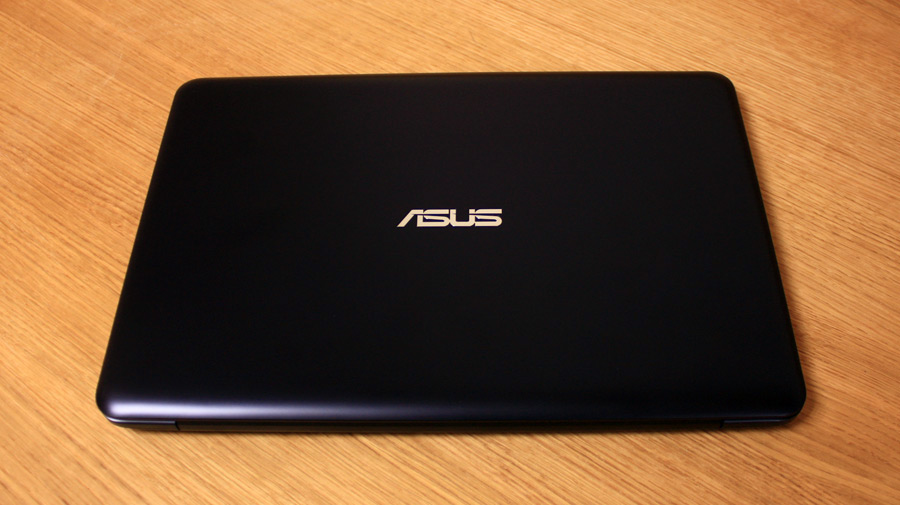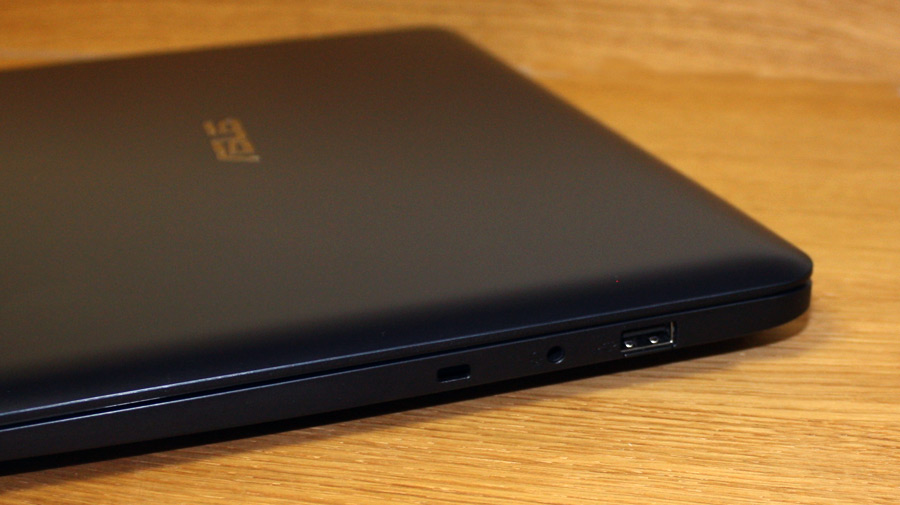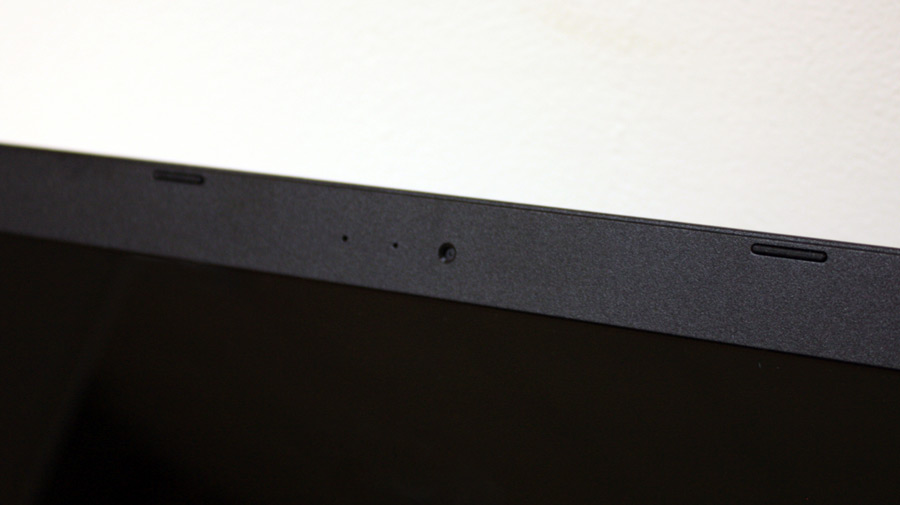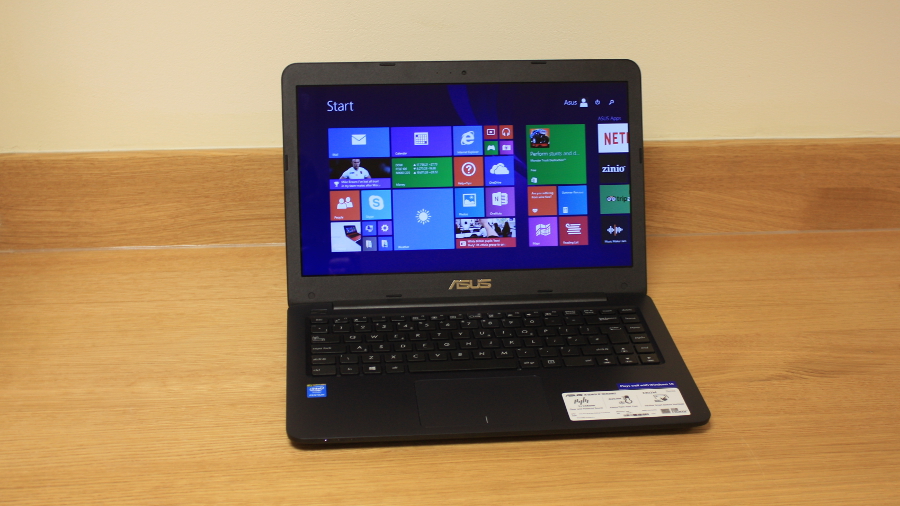Why you can trust TechRadar
Weighing in at just 1.65kg, it is noticeable how light the cloud-centric Asus E402MA is. Of course, you will need to ensure that you have reliable access to the internet in order to make the most of the machine but the fast N-grade Wi-Fi and Gigabit network port make it easy to get online just about anywhere.
Whilst the processor has enough grunt to keep up with multiple browser tabs, music, HD video or even very basic gaming, the limited storage capacity means that you will struggle to install much at all on the E402MA. I ran out of space simply by downloading the suite of benchmarks we would usually run on machines such as this.

Here is the Asus E402MA configuration provided to techradar for review:
- CPU: Intel Bay Trail-M Quad-Core N3540 processor @ up to 2.66GHz
- GPU: Intel HD Graphics
- RAM: 2GB
- Screen: 14.6-inch "Auto HD" 1366 x 768
- Storage: 32GB eMMC
- Optical drive: N/A
- Ports: 1 x 3.5mm combo audio jack, 1 x USB 3.0, 1 x USB 2.0, HDMI out, Mini D-SUB VGA out, RJ45 Ethernet port
- Connectivity: 802.11b/g/n Wi-Fi, Bluetooth v 4.0, 10/100/Gigabit LAN
- Camera: 640 x 480 resolution webcam
- Audio: "Sonic master" stereo speakers
- Battery: 2-cell 32Whrs
- Weight: 1.65kg
- Size: 339 x 235 x 219mm (W x D x H)
Apart from the Acer Aspire One Cloudbook 11, there are few alternatives available that rival the Asus E402MA on price and specification, with the vast majority of other inexpensive SSD-toting competitors being hybrids such as the compact Asus Transformer Book Flip and HP Pavilion x2.
The Transformer Book Flip and Pavilion x2 may have the 2-in-1 capabilities of a tablet-come-laptop, but both have a smaller screen. If you are looking for a conventional 14-inch laptop at a low price – you can pick up the E402MA for around £190 (around $290, AU$400) online currently – then this machine has surprisingly few true rivals.

Performance
Though I have seen Windows 8.1 run happily enough on lower specification devices, be sure to limit your expectations as to what applications will run on the Asus E402MA. Despite the low-end hardware configuration, the solid state drive ensures that booting up is incredibly speedy, and most apps start up very quickly.
Although it is loaded with the previous version of Microsoft's operating system out of the box, a reassuring sticker on the packaging reminds you that the E402MA is included in Microsoft's free Windows 10 upgrade program, which is definitely worth considering judging by what we've seen so far.
Benchmarks
Initially I had problems running the full set of benchmarks that we would usually put laptops through at techradar towers, which somewhat stumped me. After much head scratching I was only able to get this laptop to run just two of our standard tests – Cinebench and Geekbench.
It turns out that the other benchmark we would usually rely on – Futuremark's PCMark – simply could not run due to the lack of free space remaining after Windows had taken its share of the system drive.
Here are the results of the two benchmarks that did run successfully:
- Cinebench: CPU: 159; GPU: 6.11 fps
- Geekbench: Single-core: 982; Multi-core: 2973
With a higher clocked Intel Bay Trail processor, it was no surprise to see that the E402MA scored higher than either the Acer Aspire One Cloudbook 11 or HP Pavilion x2 in Geekbench's tests and the Cinebench CPU test. The GPU tests, however, showed that this laptop isn't quite cut-out for graphics-intensive tasks.

Though we haven't got a PCMark battery life score to compare against alternatives, we comfortably used the E402MA for a variety of web browsing, social media, YouTube videos and music streaming over the course of around 6.5 hours with 'balanced' power settings before it was time to plug it back into the power socket.
